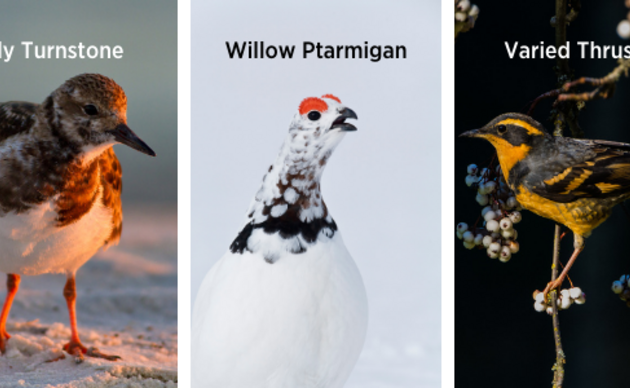Birds Connect Alaska to the World
FLYWAYS: ALASKA'S HIGWAYS IN THE SKY
What is a flyway? To reach Alaska, birds don't just wander around the globe, they follow specific travel corridors year after year. The concept that birds followed predictable migratory flight paths was first developed in the early 1930s by Bureau of Biological Survey biologist, Frederick Lincoln. Analyzing bird banding data from North America, Lincoln showed that birds migrated along four distinct flight corridors, or "flyways"—the Pacific, Central, Mississippi, and Atlantic flyways. Adopted worldwide, there are now up to 13 recognized flyways.
Alaska birds migrate to six continents, following several different flyways. For many species, Alaska is the beginning point for flyways they will use their entire lives. One amazing example is the Bar-Tailed Godwit, which has the longest nonstop bird migration in the world. This video follows researchers as they made the exciting discovery of the Bar-tailed Godwit's epic migration.
Audubon Alaska's Executive Director, Nils Warnock, is one of the researchers that worked on the Bar-tailed Godwit project. To learn more about this fantastic migration (nonstop from Alaska to New Zealand!), read the research published in the Journal of Avian Biology.
WHAT BIRD BANDING REVEALS
Try out this interactive map of birds banded or encountered in Alaska!
Directions: If you see a blank map at first, don't panic! If you don't see a "Layers" box on the side, go to the View menu>Show/Hide>Navigation Panes>Layers. When the navigation pane opens, click on the plus sign next to the word "Layers" to see the categories of birds (waterfowl, raptors, etc.). Click on the plus sign next to a category to show a list of individual species. Click on a checkbox, and watch as birds spread across the globe!
Not opening right in your browser? This is PDF file, so open in Adobe Acrobat or Reader if it doesn't seem to work in your browser (Chrome users, you may have to disable the Chrome PDF reader plugin first).
Researchers attach color and numeric markers to birds so they can track an individual bird. With color bands, each bird receives a unique combination of colors. The best way to record what you see is to write the colors down in order, and be sure to note if they're on the right or left leg. For some large waterfowl, such as swans, researchers use collars instead of bands. For large soaring birds, such as golden eagles, researchers may use wing tags. These are large number tags attached to the wings so they are visible when the birds fly high overhead.
Banding helps us understand where birds migrate, where they may stop along the way, and where they spend the winter away from Alaska. Finding these locations is essential to maintaining healthy bird populations. If there is habitat loss at stopover sites along migration routes or on wintering grounds, that affects the populations of birds in Alaska.
If you spot a banded bird or find a band, report it to the US Geological Survey North American Bird Banding Program.
How you can help, right now
Donate to Audubon
Help secure the future for birds at risk from climate change, habitat loss and other threats. Your support will power our science, education, advocacy and on-the-ground conservation efforts.
1% for the Planet
We are proud to be part of the 1% for the Planet network. If you own a business, please consider joining 1% for the Planet to support Audubon Alaska’s conservation efforts.




